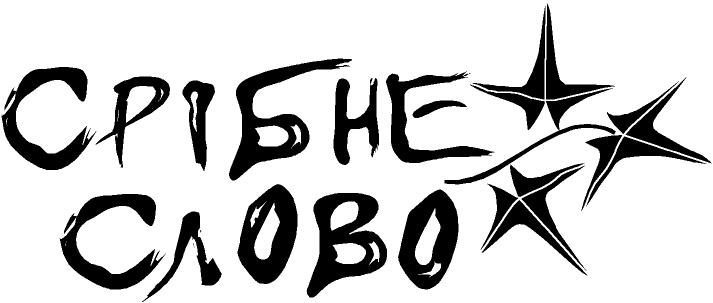- Рубрики
- Філософія, психологія, педагогіка
- Історія
- Політика, право
- Економіка
- Математика
- Фізика
- Хімія, хімічна технологія
- Біологія, валеологія
- Геодезія, картографія
- Загальнотехнічні науки
- ІТ, комп'ютери
- Автоматика, радіоелектроніка, телекомунікації
- Електроенергетика, електромеханіка
- Приладо-, машинобудування, транспорт
- Будівництво
- Архітектура, містобудування
- Мовознавство
- Художня література
- Мистецтвознавство
- Словники, енциклопедії, довідники
- Журнал "Львівська політехніка"
- Збірники тестових завдань
- Книжкові видання
- Наукова періодика
- Фірмова продукція
Стадник Богдан, Яцишин Святослав. Основи квантової термометрії..
УДК 536.5; 536.5.081
ОСНОВИ КВАНТОВОЇ ТЕРМОМЕТРІЇ
© Стадник Богдан, Яцишин Святослав, 2016
Національний університет “Львівська політехніка”, кафедра інформаційно-вимірювальних технологій,
вул. С. Бандери, 12, 79013, Львів, Україна
Доведено існування кванта температури, зумовленого дисипацією одного електрона на фононах за одиницю часу, та теоретично визначено його значення через фундаментальні фізичні сталі з установленою непевністю, залежною від непевностей методів визначення цих сталих. Показано можливість створення сучасного еталона температури на базі фундаментальних фізичних сталих із залученням еталона електричного опору на базі інверсного значення кванта електропровідності та еталона напруги
на базі масиву переходів Джозефсона.
Ключові слова: еталон температури, перевизначення поняття “температура”, квантова одиниця термодинамічної температури.
Доказано существование кванта температуры, обусловленного диссипацией одного электрона на фононах в единицу времени, теоретически определено его значение через фундаментальные физические постоянные с установленным значением неопределенности, зависящей от неопределенности методов определения этих постоянных. Показано возможность создания современного эталона температуры
на базе фундаментальных физических постоянных с привлечением эталона
электри¬ческого сопротивления на основании инверсного значения кванта электропроводности и эталона напряжения на основании массива переходов Джозефсона.
Ключевые слова: эталон температуры, перевизначення понятия “температура”, квантовая единица термодинамической температуры.
At this moment the Temperature Unit remains the last, among 7 major units of SI, value that is not regulated at the atomic level. Such state of affairs cannot be deemed adequate for the advanced technology. After implementation of current CODATA “Temperature” redefinition, the next step in provision of scientific support for realizing the Temperature Measurement of new generation seems to be a creation of Quantum Standard on the basis of the fundamental physical constants.
The Boltzmann constant consideration related only to the energy of electrons scattering in process of collision with atoms may be incomplete and therefore not quite correct. While ignoring the process of acquiring energy by electrons to which may be involved in another fundamental physical constant such as Planck constant, the obtained model would be not quite perfect. These both sides of process combine a balanced approach to the problem of temperature arising as the heat manifestation (in the case of transmission of electric current through the substance) of the conduction electrons interacting with atoms. Therefore, occurrence of the Planck constant in proposed by us the Quantum Unit of Temperature becomes reasonable.
It is proved the existence of Quantum Unit of Temperature caused by single electron-phonon dissipation per second and determined its value with the uncertainty defined by the set of different physical methods. The possibility of researching the most contemporary measure of temperature on the basis of fundamental physical constants with involvement of the Standard of Electrical Resistance on the basis of Inverse of Conductance Quantum as well as the Standard of Voltage based on the Josephson junctions array is considered.
For this purpose are involved the Standard of electrical resistance on the basis of Inverse of Conductance Quantum as well as the Standard of voltage based on the Josephson junctions that can produce voltage pulses with time-integrated areas perfectly quantized in integer values of h/2e. As mentioned resistance we propose to study FET construction, namely the CNTFET with built-in CNT which has to be superconductive. Source and drain have to be manufactured from two dissimilar conductive metals (for example constantan and copper) that constitute the T-type thermocouple via CNT quasi-junction. The last is inhe¬rent in resistance which is equal to 25812.807 557 ± 0.0040 Ώ, due to transient resistance of contacts. While studying the dissipation of electric power on such an electric resistance in tempe¬rature measure¬ment area, it becomes able the estimation of temperature jump conjugated with which is formed per unit time t by N conduction electrons of each charge e that transfer energy to atoms of matter. Resulting value of temperature jump is deduced, and it is reduced later to single electron-phonon dissipation per second. Received value is identified as Reduced Quantum Unit of Temperature: . On condition of power supply from Johnston junc¬tions array, it appears an opportunity to pass a discrete, clearly appointed number of electrons through Standard’s CNT. The studied temperature jump is easiest to measure with minimal methodical error with help of built-in high-mentioned thermocouple.
It is deter¬mined by electric energy dissipated on CNTFET contacts at passing a current, via ratio of h and kB and is equal to 3.199 493 42 ∙ 10-11 K with relative standard uncer¬tain¬ty 59.2∙10-8 (defined by well-known values h and kB of NIST tables). It can be extremely helpful at Quantum Temperature Measurement Standard design.
Key words: temperature standard, redefinition of the “Temperature”, quantum unit of thermodynamic temperature
Література – 16.


















